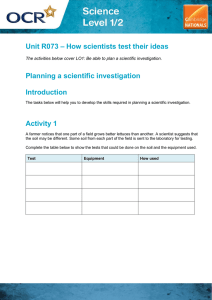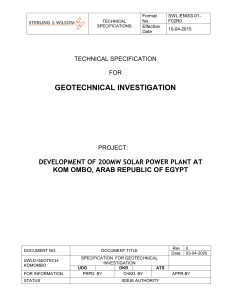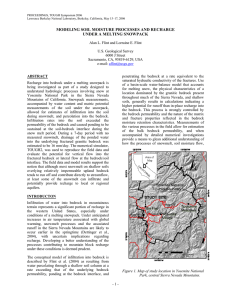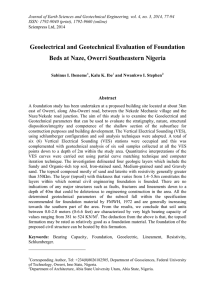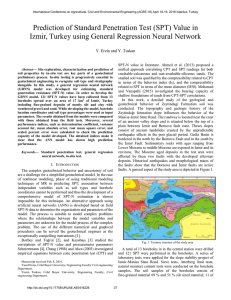1.364 ADVANCED GEOTECHNICAL ENGINEERING HOMEWORK NO.1 FALL SEMESTER 2003
advertisement
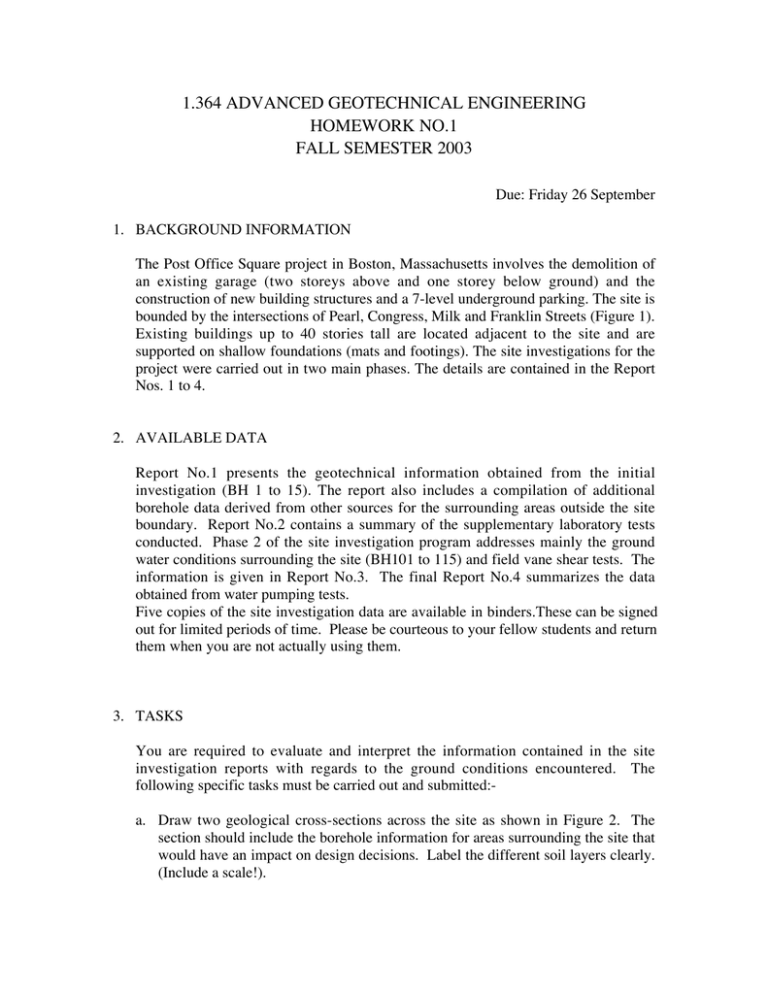
1.364 ADVANCED GEOTECHNICAL ENGINEERING HOMEWORK NO.1 FALL SEMESTER 2003 Due: Friday 26 September 1. BACKGROUND INFORMATION The Post Office Square project in Boston, Massachusetts involves the demolition of an existing garage (two storeys above and one storey below ground) and the construction of new building structures and a 7-level underground parking. The site is bounded by the intersections of Pearl, Congress, Milk and Franklin Streets (Figure 1). Existing buildings up to 40 stories tall are located adjacent to the site and are supported on shallow foundations (mats and footings). The site investigations for the project were carried out in two main phases. The details are contained in the Report Nos. 1 to 4. 2. AVAILABLE DATA Report No.1 presents the geotechnical information obtained from the initial investigation (BH 1 to 15). The report also includes a compilation of additional borehole data derived from other sources for the surrounding areas outside the site boundary. Report No.2 contains a summary of the supplementary laboratory tests conducted. Phase 2 of the site investigation program addresses mainly the ground water conditions surrounding the site (BH101 to 115) and field vane shear tests. The information is given in Report No.3. The final Report No.4 summarizes the data obtained from water pumping tests. Five copies of the site investigation data are available in binders.These can be signed out for limited periods of time. Please be courteous to your fellow students and return them when you are not actually using them. 3. TASKS You are required to evaluate and interpret the information contained in the site investigation reports with regards to the ground conditions encountered. The following specific tasks must be carried out and submitted:a. Draw two geological cross-sections across the site as shown in Figure 2. The section should include the borehole information for areas surrounding the site that would have an impact on design decisions. Label the different soil layers clearly. (Include a scale!). b. Draw contours for each of the top of the Boston Blue Clay (BBC), glacial till and the bedrock. c. Summarize the soil properties in tables. d. Identify and classify each soil layer including the bedrock. e. Determine the average geological profile for the site. Plot the variation of the soil and rock properties with depth. These should include at least the following items:Standard penetration tests profiles Undrained shear strengths (laboratory and field) Pressuremeter modulus and limit pressures Total unit weight Water content and Atteburg limits Plasticity Index Liquidity Index Hydraulic conductivity Hydrostatic pressure line and insitu pore water pressures Total and effective insitu vertical stresses Preconsolidation pressures f. Give your observations and comments on the nature of the site geology and soil stratigraphy, based on the available information. You may make use of library books that describe the geology of the Boston area for additional information. Please do not refer to information on soil properties reported in published technical papers on the project itself. Describe and discuss the characteristics of each soil/rock layer and ground water conditions in detail. List reference materials used. g. Comment on any engineering implications that may influence the subsequent design decisions for the excavation and foundation aspects of the project. Although each student is to submit the homework individually, you are welcome (indeed encouraged) to discuss the homework with each other and also with Prof. Whittle.

